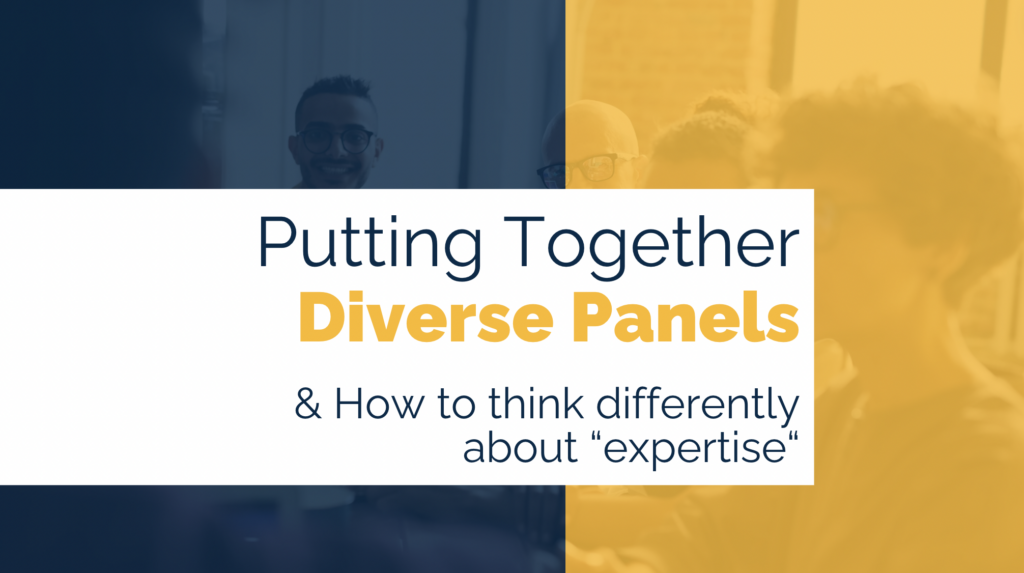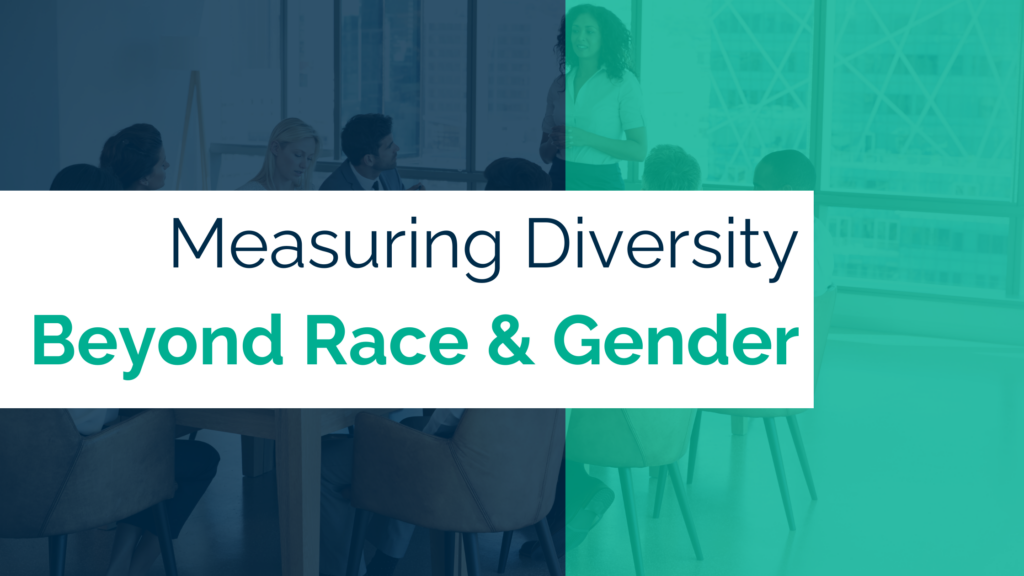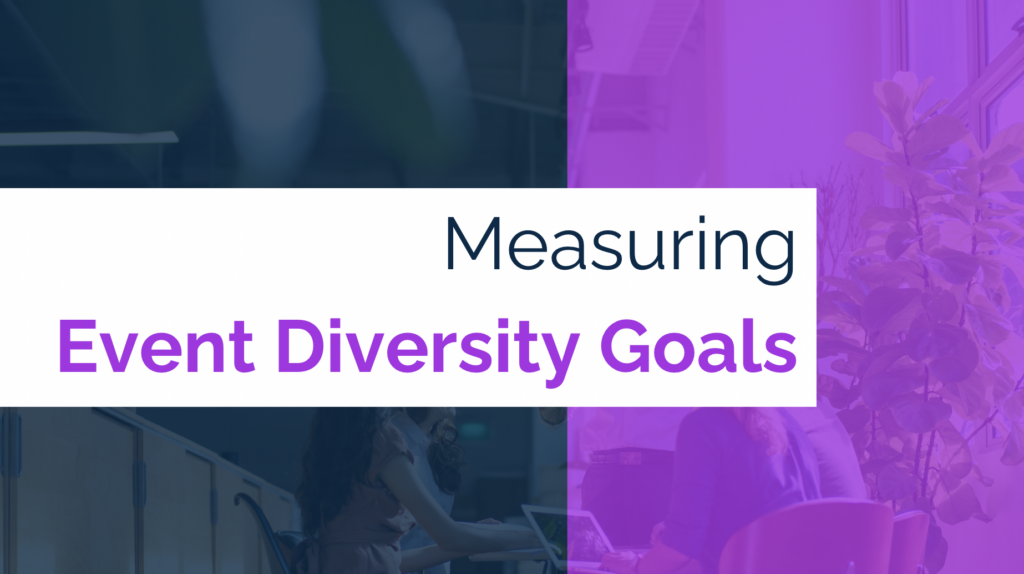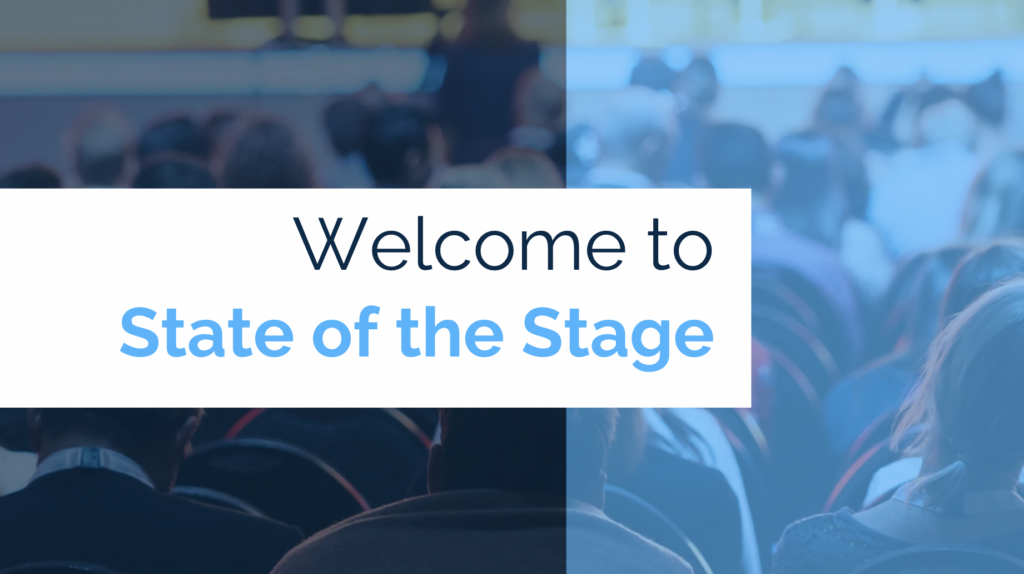State of the Stage
How to Measure Diversity Goals
February 2024

Today we're talking about one of my favorite topics - aligning good intentions with relevant data to turn those good intentions into measurable goals.
Let's get started with a question we've heard many times over the past few years.

Ask Out Loud Question:
Our company and event team agree that DEI is a core value. How do we know if we're hitting the mark when it comes to events?
The Short Answer:
Diversity, equity, and inclusion each apply to events in distinct ways. Diversity may indicate you want a diverse group of attendees, diverse speakers, and an agenda that attracts a wide group of professionals. Equity may indicate that you want to remove barriers that impact who attends, sponsors, and/ or speaks at your event. Inclusion may bring up issues of physical accessibility, location, safety, and even the type of content that makes people feel like a part of the community. Today, let's focus on the diversity component of DEI, and the agenda component of the event. I'll address some of the other details in future installments.

What We Measure Matters
One of the reasons we started Choir was because we saw that so many conferences had good intentions about diversity and representation, but no way to quantify their efforts.
They knew that there should be "more" women speakers, and "more" people of color speakers. At the time, a handful of events were committed to reaching a pre-defined percentage of women speakers, or ensuring that every panel had at least one woman on it. Outside of those outliers, most events were not collecting or measuring any speaker identity data.
When good intentions go unmeasured, filling speaking spots with a broad range of experts can take a back seat to the practical (and measured!) realities of selling sponsorship packages and filling attendee seats.
The results:
- The same speakers year over year, often with the same canned presentation from prior years.
- While it saves time and effort for the agenda committee to re-book speakers they know from prior years, this may be a disservice to attendance. "I've heard that guy so many times" is a common explanation we hear for attendees opting out of events.
- Women panelists as a last minute afterthought, often asked to interview or moderate a discussion among men, without the opportunity to contribute her own perspective.
- People of color - especially Black women - pigeonholed into panels about DEI instead of their area of expertise.
So, how can a conference or event put metrics around representation on stage, to define and work towards representation goals?
Below are tips on how to get started, and then take it to the next level.
Benefits of a Diverse Agenda
- Ensuring a diverse and representative agenda can attract a wider audience, which in turn opens more sponsorship opportunities.
- An engaging agenda with fresh perspectives makes your event stand out in a competitive event landscape.
- Representation can attract a wider audience. It's not necessarily the case that people want to see someone that looks like them on stage (though that is also sometimes true) but they also want to know that the voices that are valued and elevated include voices like theirs.
- Homogenous speaker lineups risk giving the unspoken message that people from underrepresented groups do not belong, or they are only valued as listeners, not leaders.
- Being intentional about representation mitigates the PR and reputational risk of being "called out" for lack of diversity.
>> Basic: Measure Broad Speaker Demographics
- Track the percentage of women speakers, and the percentage of people of color speakers.
- Go a step further and combine those to track the percentage of women of color speakers, men of color speakers, white women speakers, and white men speakers.
- Measure what your speaker lineup looked like last year and set goals for progress.
- Check your progress at multiple points while building your agenda. Tip: In your first year of measuring while you build, start looking for speakers earlier than usual. You may need to look outside of your network and that can take longer. The fresh perspectives you'll get are worth the work on the front end.
Have a speaker spot you need to fill? Reach out and we'll search our Voices speaker database for you!
>> Intermediate: Review Your Content
- Review whether speakers from underrepresented groups tend to be placed in speaking roles where they don't get to share their expertise. For example: host/ welcome speech roles, some moderator roles, emcee roles.
- Check whether you have both men and women of color represented in expert sessions throughout the agenda. (Not just in the DEI sessions!)
- Track whether speakers from underrepresented groups are well represented in high value sessions such as those that offer continuing education credits.
- Look at the agenda as a whole, and look at its component parts.
- If a conference has several themed tracks, look at the representation in each track.
- Look at each panel - especially those with 4 or more people on stage. Given the risk of being called out on social media for having a "#manel," reviewing panels is an optics best practice as well as a way to ensure a variety of perspectives contributing to the conversation.
>> Advanced: Measure & Track Visibility
Once you've begun tracking speaker demographics, you can add in tracking the visibility of speaking roles.
- Do all of the keynote spots go to white men?
- How about other main stage talks?
- Workshops?
- Continuing education sessions?
Below are all of the visibility factors that go into the Choir Score™. We measure these factors to calculate a visibility score for each speaking spot and then cross reference that with the combined race and gender of the speaker. Not working with us? No problem. You can use the factors as a guide to reviewing your agenda.
- Stage Visibility (i.e. main stage vs breakout rooms)
- Concurrent Sessions
- Share of Panel
- Moderator Status
- Length of Presentation
- CE Credit
- Repeat Speaker
- In-Person vs. Virtual Audience Split (Hybrid Events Only)
To get a sense of the detail that measuring visibility illuminates, explore sample conference data in the data visualization here.
See more about what we measure at Choir.

>> Bonus Round: Get Detailed
Stay tuned for a future installment where we'll talk about measuring more specific racial and ethnic identities, tracking other types of identities (for example, members of the LGBTQ+ community, people with disabilities, veterans, immigrants, caretakers, and many others. We'll talk about the best way to collect identity info (psst - it's self ID!) and how to facilitate that collection.
I hope you’ve found some of these tips helpful. If I missed some, or you measure another way- I’d love to hear about it.
Coming up on Ask Out Loud
"I feel beholden to our sponsors when agenda planning. Do you have suggestions?"
Read more agenda diversity questions here. Let me know which questions are important to you, or if you have another question you'd like us to answer.




